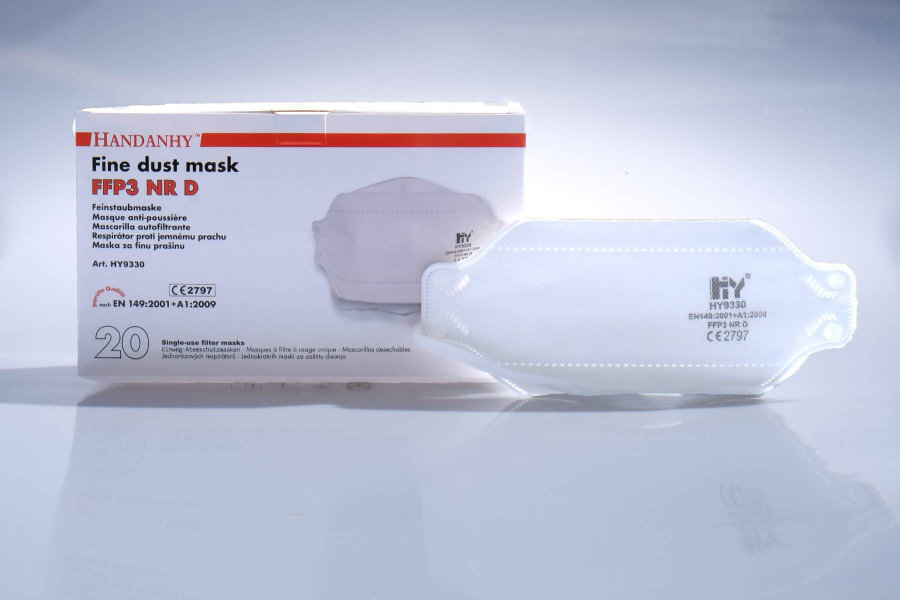Medical
Masks

FFP2 respirators and FFP3 respirators are assigned to the same standard. The 3 in FFP3 stands for a higher protection class of respirators. This means that the FFP3 respirator must meet higher requirements for durability. This respirator test involves extensive testing.
The difference in the requirements is clearly listed in the following table:
| FFP2 | FFP3 | ||
|---|---|---|---|
| Certified standard | FFP2 (EN 149:2001) | FFP3 (EN 149:2001, A1:2009) | |
| Required labelling | Manufacturer logo, CE-labelling, Year of publication of the norm, Filter designation (FFP2) | Manufacturer logo, CE-labelling, Year of publication of the norm, Filter designation (FFP3) | |
| Further requirements | Respirator has to be a close-fitting respirator (Tight fit test). Respirator must have two carrying straps, preferably headbands. | ||
| Documents that manufacturers and suppliers should make available on request | Certification after valid norm EN 149 - from the manufacturer issued certificate of conformity, which shows that the product passed all quality exams. | Certification after valid norm EN 149 - from the manufacturer issued certificate of conformity, which shows that the product passed all quality exams. | |
As it is the same standard EN 149:2001, A1:2009, respirators must bear the same marking to be called semi-filtering FFP2 mask or semi-filtering FFP3 mask. The other requirements are also identical and the documents that manufacturers and suppliers must provide on request are also identical.
However, the level of testing that a FFP3 respirator must pass is much more demanding than that which a FFP2 respirator must pass. The test environments are identical because they are the same respirator standard.
The differences in the level to be met are listed in the following table in an easy to understand way:
| Anforderung | FFP2 (EN 149-2001) | FFP3 (EN 149-2001, A1:2009) |
|---|---|---|
| Minimal Efficiency | ≥ 92 % | ≥ 99 % |
| Test substance | NaCl and Paraffin oil | NaCl and Paraffin oil |
| Flow rate paraffin oil test | 95 L/min over 3 minutes maximum permeability 6 % | 95 L/min over 3 minutes maximum permeability 1 % |
| Flow rate natrium chloride (NaCl) test | 95 L/min over 3 minutes maximum permeability 6 % | 95 L/min over 3 minutes maximum permeability 1 % |
| Resistance during inhalation - maximum resistance in mbar | with 30 l/min 0,7, with 95 l/min 2,4 | with 30 l/min 1,0, with 95 l/min 3,0 |
| Resistance during exhalation - maximum resistance in mbar | 160 l/min 3,0 | 160 l/min 3,0 |
| CO2 clean-up | ≤ 1% | ≤ 1% |
We hope this has provided you with valuable information on the difference between the protection levels FFP2 and FFP3 of the standard EN 149:2001, A1:2009 for FFP2 and FFP3 respirators.